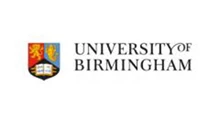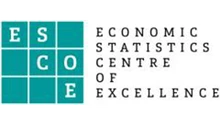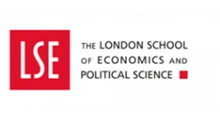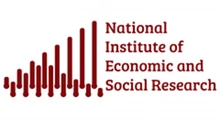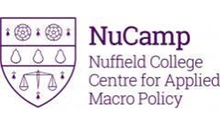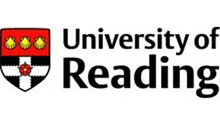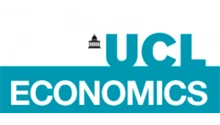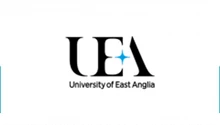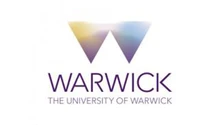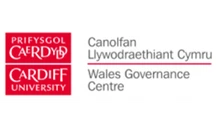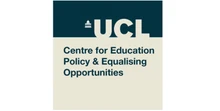Bengaluru and Chennai, two of southern India’s most vibrant cities, are emblematic of the country’s resurgence as a global economic powerhouse. With tariff barriers being raised in China and the United States, the Asian sub-continent may offer alternative opportunities for exporters and investors.
With the world economy in turmoil as the trade war between China and the United States restarts, more exporters and foreign investors are looking towards the emerging economic superpower, India. This should be no surprise. After all, India has a GDP of over $3.5 trillion (see Figure 1) and this is growing at an impressive 7-8% a year.
Figure 1: India's GDP, 1980 to 2024
Source: IMF, 2025
Even with a huge population of 1.4 billion people, India’s economic projections are mind-blowing. It is already the world’s third largest economy and by 2035, its share of global GDP is projected to be on par with that of the United States. India’s population is expected to be 1.6 billion people by 2035, which would make it easily the world’s most populous country. The population is spread across 29 diverse states, but a staggering 640 million Indians live in cities – hence the country’s emphasis on smart cities and digital innovation.
In terms of geopolitics, India is also becoming a major player on the world stage. It has strong diplomatic ties with Australia through the G20, the Quad Leaders’ Summit (a grouping of Australia, India, Japan and the United States) and the East Asia Summit.
So, it was time for the airport economist to return to India. I had filmed The Airport Economist in Mumbai before the Covid-19 pandemic and hosted the Cricket, Collaboration and Commonwealth conference in New Delhi in 2023. But this time I decided to take a look at the mega-cities of Bengaluru and Chennai in the south of the sub-continent.
Bengaluru
Bengaluru (formerly Bangalore) is the Silicon Valley of India. It is the home of Infosys and a number of Indian information technology (IT) giants as well as the country’s centre of space, aerospace and defence.
According to Australia’s consul-general in Bengaluru, Hilary McGeachy, Australia diplomatic presence is strategically placed around India to take account of local and regional strengths:
‘I think to some extent all of those posts have an identity, although we’re all here prosecuting whatever Australian business would like to achieve. If you look at Calcutta, it tends to lend itself well to the mining sector and Australia’s mining technology. If you look at Chennai, advanced manufacturing and education. Look at Mumbai, of course, financial capital. Look at Bengaluru, we’re here for innovation and tech that cuts across a lot of other areas as well. It’s got strong research, it’s got strong universities, but then it’s got this start-up sector as well.’
Bengaluru is an important hub for start-ups. As the consul-general says: ‘There are over 100 unicorns in India and about 50 of them are based here. We see a large chunk of the venture capital that goes to start-ups comes in here. I think for Australia, where that’s making a difference is we’re starting to see Australian businesses come and look at that ecosystem more closely.
‘You’ve got Australia’s big banks here, taking advantage of the digital capabilities in Bengaluru. Telstra, that’s been here a long time; Atlassian’s here; but it’s that next generation of talent – some of them are young, some of them are emerging. They’re looking for connections, could be entrepreneurs, could be fintech, could be cybertech. And of course, if you’re in aerospace or space or the digital world, you come to Bengaluru.’
Abhinav Bhatia, trade commissioner for Queensland, agrees: ‘We chose Bengaluru way ahead of many other jurisdictions because we could see the rise of southern India many years ahead. Right now, Bengaluru is the powerhouse of technology, IT start-ups, biotech, quantum computing. Out of 120 unicorns in India, I think 30% of that is coming out of Bengaluru. That is massive. As India becomes more prominent for Queensland, we are expanding.’
The space industry is a key part of Bengaluru’s start-up scene and of increasing importance to the economic partnership between Australia and India. The chair of IN-SPACe, the Indian government’s agency for space promotion, Dr Pawan Goenka, told me: ‘Until three to four years ago, there were hardly any space companies in India despite a strong space heritage in government-led science and research. Now there are 250 space start-ups in just three years based mainly in Bengaluru.’
Dr Goenka told me that the agency has been talking with several countries about how to get better engagement with the private sector, saying: ‘We are perhaps farthest ahead with Australia. We started that at BSX two years ago and the head of the Australian space agency has taken a personal interest in how to work with Indian companies.’
Australian space start-ups are emerging too. One example is the Space Machines Company, based in Botany at the University of Technology Sydney (UTS) tech lab. Founder Rajat Kulshrestha explained to me that Space Machines is a bit like roadside assistance for satellites. ‘It is our business to make sure we can in space get close to those satellites, understand what’s happening with them, protect them, service them, repair them. Bengaluru is a hub of all aerospace activity in India, and the space tracking centres are in Bengaluru so it makes sense for us to be here.’
Rajat explained the choice of India for his business and Bengaluru in particular: ‘For the last 20 years, there’s been a massive transformation and it’s become a place where people are coming from different parts of the country to train in deep tech, AI [artificial intelligence], digital transformation. India’s got a heritage of low-cost manufacturing. It’s got deep space heritage. It’s emerging as a massive pool of capability and talent. And so when we think about all of the ingredients of a great commercial and technical collaboration, it makes for a perfect destination.’
Chennai
From Bengaluru, I flew to Chennai (formerly Madras), which is often known as the Detroit of India, due to its large automotive sector. But it also has a major port, strong aviation links and a large manufacturing sector with excellent educational institutions.
According to Alex Paul, development commissioner of the Madras economic zone: ‘If you look at our presence when it comes to global value chains, Chennai is a very important destination. There is a great diversity of articles that are manufactured in the state of Tamil Nadu, reflecting its strength in terms of potential investments, potential skills and components being manufactured in one single province.’
You see the large footprint (or tyre-print) of the local auto industry when visiting Mahindra & Mahindra, an Indian car manufacturer. According to Velusamy Ramasamy, president, automotive technology and product development, Mahindra is revolutionising the sector with electric vehicles (EVs) and AI-driven mobility solutions: ‘We started with the humble jeep in the 1940s and now produce cutting edge SUVs [sports utility vehicles] and EVs.’
Based at Mahindra Research Valley in Chennai, Dr Velusamy explains its strategic importance to Mahindra & Mahindra: ‘We have about 6,500 people working here in Mahindra Research Valley, which is situated in Chennai. Our company is in Mumbai and manufacturing centres are in Nashik and Pune and spread out all over India.
‘But when Anand Mahindra, the chair, conceived this R&D [research and development] centre here, he wanted to be away from the manufacturing plants, away from the busy times of the Mumbai city and the manufacturing pressures. He wanted the engineers to be very creative and create the future, and therefore he wanted them to be thinking three or four years ahead of their time. Chennai has very important universities, Anna University, IIT [Indian Institute of Technology], Madras and there are also 200 engineering colleges across this state.’
How does Australia fare in Chennai? According to the country’s consul-general in Chennai, Silai Zaki: ‘Chennai has traditionally been a manufacturing and industrial hub for India and there are excellent universities there. So people from all over India were coming to study there for Australia. We have a strong Tamil population in Australia, and it’s on the coast looking at the Bay of Bengal, a strategically important area for us as a country to have a post there.’
As well as Chennai’s traditional strengths, the consul-general notices that the locals are ‘really embracing tech and new industries and fields. So if you look at Tamil Nadu as a state, it’s really trying to take advantage of India’s comparative advantages, a young population, educating them, and then trying to build industries of the future. So there’s electronics happening there. If you’ve bought an iPhone recently, there’s a chance that it was built in Tamil Nadu.’
She also mentions renewable energy: ‘In Chennai, they’re looking at expanding the production of EVs, there’s hydrogen being produced in southern Tamil Nadu and the state was a very early adopter of wind technology. We think that between Australia’s ‘Future Made in Australia’ programme and India’s ‘Make in India’, there’s a lot of complementarities where we can work together to ensure Australia meets its goals and India meets its goals towards net zero.’
The consul-general believes that the Australia-India economic cooperation and trade agreement (ECTA) has ‘reset the mindset’ in terms of doing business in India for Australian exporters and investors:
‘I think for a long time people were thinking India is too hard, it’s too difficult to get into. But ECTA was the driving force that has enabled a lot of companies to re-look at India and actually realise there’s been a lot of reforms introduced and ECTA provides Australians with an advantage. We’re one of very few countries that has a trade agreement with India, and Australian companies should be looking at taking advantage of what it offers them.’
One example of a successful Australian small and medium-sized enterprise (SME) is Callington. I spoke with the regional managing director for India and Qatar, Sriram Iyengar, who explained: ‘The history of Callington goes back to 1968, when Nick Schoulal who is the current managing director of the whole group was 19, and he decided that he needed to do something quite dramatic in his life. So he decided that he needed to mix some chemicals. He did not find space, he went to his father’s garage, he took a few chemicals, he mixed them together and he prepared a product. And that was the start of Callington.’
‘Now, 56 years later, I think we’ve done remarkably well as a group and as an organisation. We started off with fuel additives. Somewhere in the 1980s, he thought, why not get into the subject of border bio-security. And that’s where the whole journey took off for Callington as a group because that is a very important subject not only for Australia but also for the whole world. Nick decided at some point in time in the 1980s that aviation and aerospace is where the future is and put in all his efforts there.
‘We now have 15 subsidiaries across the world. We have five manufacturing locations, close to 160 employees, each passionate about what they’re supposed to do with the final objective of making Callington a global force in the space of aircraft distance section and aircraft maintenance. And Chennai as an aviation hub is perfect for India, South East Asia and Qatar, which I have responsibility for.’
Finally, in Chennai, I visited the Tata Consultancy Services (TCS) campus. You can’t go to India (and indeed many other parts of the world) without noticing the influence of Tata.
As Ranjeet Goswami, Tata’s global head of corporate affairs, explains: ‘Tata is the biggest and the most respected business conglomerate in India, started with our founding fathers 156 years back. Today, TCS is present in over 50 countries with over 620,000 highly trained technology consultants helping us in partnering with customers to improve their competitiveness in global markets. We are proud that close to 36% of this workforce are women and they are working on this technology area side by side with our partners. We are also proud of the fact that over 150 nationalities are represented in this global talent pool of ours.’
Tata has a large presence in Australia. As Ranjeet explains: ‘In Australia, we have been established since 1988, so it has been 35 years now, working with most of the top ten listed companies and organisations on the Australian Stock Exchange. It’s at the top levels of Australian corporate life and TCS is involved with a lot of important programmes with the government of Australia, with cybersecurity, with digital infrastructure. The strategic partnership between India and Australia, it underlies the priority of science, research and technology under those areas, cybersecurity, innovation, digital technology, all key areas.
‘Under the strategic initiative, which was re-energised by prime minister Albanese when he visited India and along with our prime minister, Mr Modi, he re-energised an initiative that now has a very active digital working group under the Cos Forum, which is talking about the challenges that the digital markets are facing, the opportunities that the markets have to expand further and how these two sectors can grow beyond where they are today. These initiatives are being led by both countries, by the business organisations who come together to talk and advise the governments on each side.’
Conclusion
What did I learn from India? At first glance, it can seem intimidating. After all, it has 1.4 billion souls across 29 diverse states and with 640 million people based in their massive teeming cities. But don’t be intimidated. India has a parliamentary federal system with familiar institutions and legal framework. Many of its citizens are young, well educated, English-speaking and tech-savvy.
They are rightly proud of their nation’s achievements, but also interested in the world and foreign cultures and influences. As a confident modern nation, India is not scared to take a look at trends beyond their shores.
And what advice would I give to Australian exporters and other foreign investors and traders visiting India, particularly southern India?
India is an amazing diverse place. So you have to pick your starting point based on your industry speciality. For example, in finance or films, go to Mumbai, where Bollywood is; in government, go to New Delhi; in space, IT or aviation, head to Bengaluru; or for manufacturing to Chennai and so on.
For those interested in trading or investing in India, the Ministry of Commerce and Industry is a key contact. It promotes international trade and investment through several organisations, including Invest India, which serves as a facilitator for investments and trade growth, working with foreign investors and providing support throughout their business lifecycle.
For Australians, talk to the Australian High Commission in New Delhi or consuls-general in places like Bengaluru and Chennai, and also ask your state agency like Queensland. They can help you out when you find yourself on a sticky wicket. Enjoy the culture – and do talk cricket. It’s a great icebreaker, so catch the colour and excitement of an Indian Premier League (IPL) game if you can.
In short, India has amazing charisma and you just want to keep coming back. And now with tariff barriers being raised in China and the United States, India is increasingly looking like an attractive proposition.
Where can I find out more?
- The Airport Economist India – Bengaluru and Chennai episodes are now on air on the Airport Economist channel on Ticker News.


